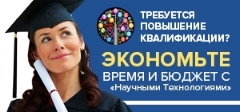Podkamenny Y. A. (Associate Professor, Polytechnic Institute (branch) of NEFU named after M.K. Ammosova in Mirny)
Bebikhov Y. V. (Associate Professor, Polytechnic Institute (branch) of NEFU named after M.K. Ammosova in Mirny)
Semenov A. S. (Polytechnic Institute (branch) of NEFU named after M.K. Ammosova in Mirny)
Spiridonov V. M. (Polytechnic Institute (branch) of NEFU named after M.K. Ammosova in Mirny)
| |
The paper discusses the basic principles of X-ray luminescent separation of diamond ores as an automation object and analyzes modern technical solutions and basic organizational and technical issues, the solution to which will contribute to the effective implementation of automated control systems in separation. The complex automation systems of processing plants (ore mills) are described. The process and principle of operation of the X-ray luminescent separator of diamond ores are described. It is expedient to automate the X-ray luminescent separation using an automated control system. The issues of designing an automated control system with a human-machine interface are considered. An APCS system and an interface of the automated operator-technologist workstation, upgraded through implementing RSLogix 5000 and FactoryTalk View production management software are described.
Keywords:automated control, process, X-ray luminescent separation, processing plant, mining enterprise, diamond ore.
|
|
| |
|
Read the full article …
|
Citation link:
Podkamenny Y. A., Bebikhov Y. V., Semenov A. S., Spiridonov V. M. Analysis of X-ray luminescent separation of diamond ores as an automation object // Современная наука: актуальные проблемы теории и практики. Серия: Естественные и Технические Науки. -2021. -№08. -С. 94-103 DOI 10.37882/2223-2966.2021.08.25 |
|
|






